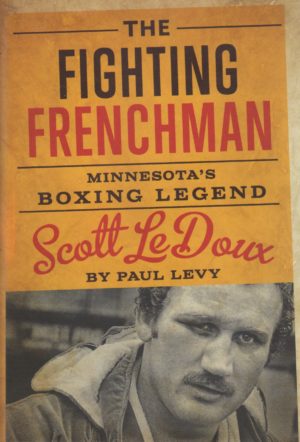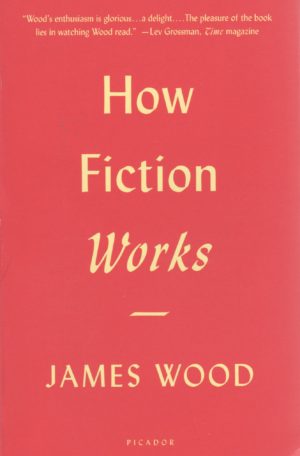
The Fighting Frenchman by Paul Levy (2016. University of Minnesota Press. 978-08166-9719-9)
It’s been called the Sweet Science. The term was coined by English sporting writer, Pierce Egan in the early 1800s (see http://boxing.isport.com/boxing-guides/why-boxing-is-called-the-sweet-science). I wouldn’t say I was necessarily a fan. Having grown up watching the greats of the modern era, Ali, Frazier, Foreman, Holmes, Norton, and Tyson, to name a few heavyweight professional boxers I watched on television in my childhood, adolescence, and into my early adulthood, I paid attention to who was the heavy weight champion until the game became a carnival in the late 1980s and early 1990s, when the title of “World Champion” was not unified and was held by various boxers at the same time, each title sponsored by a different promoting organization. But even though I wasn’t a fan, certain memories stand out for me with respect to my connection to boxing. Watching Cassius Clay demolish Sonny Liston and Floyd Patterson. Being intrigued by the notion that a famous person, Clay, would change his name simply because he changed his faith. Considering whether Ali’s stand against the Vietnam War was genuine or a publicity stunt. Watching George Foreman in the Olympics. Marveling at the chiseled body of Ken Norton and the insane, tractor like insistence of Joe Frazier in the ring. And then, of course, as a white kid growing up in the suburbs, wondering if any white man could ever really stand up in the ring and win the title.
Here’s the story of a poor white kid from Crosby, Minnesota, who, though he never won a title, was someone I followed. Why? Well, Scott LeDoux was unorthodox and intriguing in so many ways, beginning with the fact he played college football at my alma mater, UMD. Then there was the son-of-a-miner connection (my maternal grandfather was an iron miner). And of course, the fact he was white. Paul Levy delves into all aspects of LeDoux’s troubled life, including the story of the boxer’s molestation at the hands of a neighborhood teem when he was only six. That incident scarred LeDoux, caused him to want to lash out in the ring, to purify himself, driving him, if not to greatness, then at least to notoriety. You get it all. The love story. The pain. The wins. The losses. The fixed fights. The hard luck. The fight that I watched on pirated pay-for-view in my Inver Grove Heights apartment as a law student (relax: I simply strung an extended wire around the room and captured the signal) where LeDoux, pummeled by Ken Norton for the entirety of the fight, came off the ropes in the last rounds and stood toe to toe with Kenny, bashing him with blow after blow after blow. He didn’t win but had the fight gone one more minute, he would have. During LeDoux’s career, the movie Rocky was released and became a hit. Though the hardscrabble fighter in Stalone’s epic shares the grit and tenacity of the boy from Crosby, the film wasn’t a fictionalized version of Scott LeDoux’s life. Unlike what’s depicted on the screen, the boxer from Crosby didn’t fare well after he left the ring. There’s much sadness, a touch of redemption, and even a bit of reconciliation at the end of the book, making the tale so much richer than an imagined story of a celluloid hero.
Levy’s touching portrayal of a man, his times, his demons, and the disgustingly brutal world of heavy weight prize fighting is better than a draw but not quite a knock out.
4 out of 5. There’s some repetitive writing that could have used a heavier edit but, overall, a fast, good read.

How Fiction Works by James Wood (2008. Pickadore. ISBN 978-0312428471)
Wood, the literary critic for The New Yorker is a bit high-brow for my comprehension and taste. His diminutive volume dissects elements of fiction writing, particularly novel writing, by comparison. He draws upon segments of well-known pieces of literature, both classical and modern, augmented with occasional references to genre fiction, to inspect, discuss, and explain how great writers build their fictional worlds in terms of tense, point of view, plot, character, and setting. His work is curt, precise, and engaging despite the overall atmosphere of suffyness one would expect in reading something written by a legendary critic. He tends, in choosing his exemplars, to draw upon Flaubert, Austen, Joyce, James, Checkov, and Tolstoy and other haughty types. But that’s okay for in the end, will it be writers such as those listed and relied upon by Wood who remain relevant a century from now, or will it be Grisham and Patterson and Flynn and their ilk, the storytellers of today who, in general, sacrifice quality and literary excellence for quantity and cash?
As a writer who has been accused of spending an inordinate amount of time providing details in my work about minor characters, folks who might appear in one brief scene and then never take the stage again, I thoroughly enjoyed Wood’s discussion of “flat” (superficial) and “round” (detailed and developed) characters. He reminds us all that, in the end, writing fiction is a bit of a card trick, an invented reality that is subject to numerous viewpoints and divergent analysis when the curtain is withdrawn and we can see the writer’s hands:
In Aspects of the Novel, Forster used the now-famous term “flat” to describe the kind of character who is awarded a single, essential attribute., which is repeated without change as the person appears and reappears in the novel…Forster is generally snobbish about flat characters, and wants to demote them, reserving the highest category for rounder or fuller characters. Flat characters cannot be tragic, he asserts; they need to be comic. Round characters “surprise” us each time they reappear; they are not flimsily theatrical; they combine well with other characters in conversation; “and draw one another out without seeming to do so.”
I picked up this little primer of writing tutelage at Garrison Keillor’s Common Good Books in St. Paul on a whim. As I wandered the store, looking at the uruly crowd of hard cover and soft cover tomes for something to read, I wasn’t really intending to embark on yet another course of learning in my writerly career. And yet, that’s what transpired. In the end, I’m thoroughly happy I slid my little plastic card to the clerk and bought this book.
4 stars out of 5. A quick read that gives even an experienced fiction writer pause and causes necessary contemplation over the word, “Why?”
Peace.
Mark


